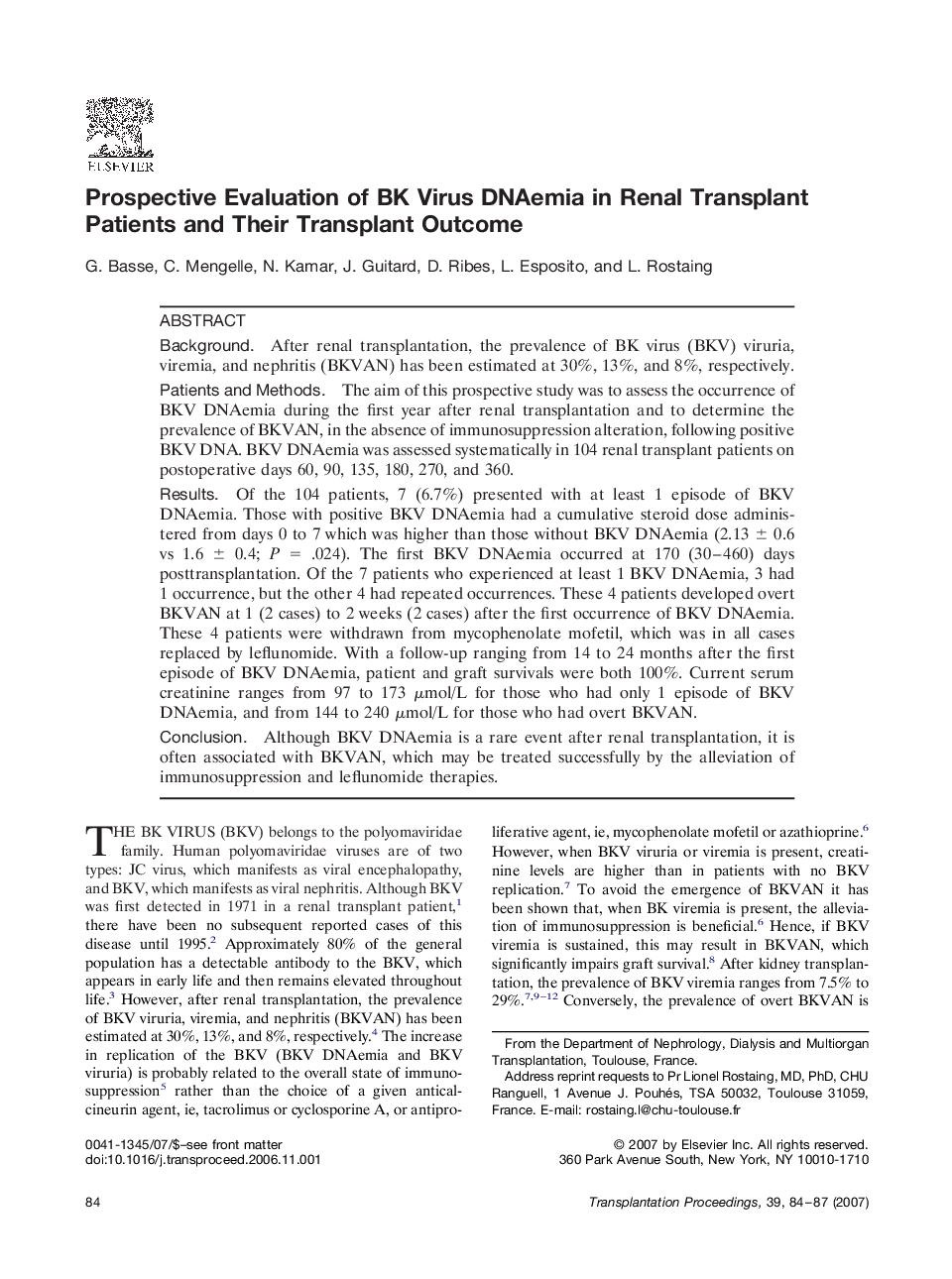| Article ID | Journal | Published Year | Pages | File Type |
|---|---|---|---|---|
| 4262917 | Transplantation Proceedings | 2007 | 4 Pages |
BackgroundAfter renal transplantation, the prevalence of BK virus (BKV) viruria, viremia, and nephritis (BKVAN) has been estimated at 30%, 13%, and 8%, respectively.Patients and MethodsThe aim of this prospective study was to assess the occurrence of BKV DNAemia during the first year after renal transplantation and to determine the prevalence of BKVAN, in the absence of immunosuppression alteration, following positive BKV DNA. BKV DNAemia was assessed systematically in 104 renal transplant patients on postoperative days 60, 90, 135, 180, 270, and 360.ResultsOf the 104 patients, 7 (6.7%) presented with at least 1 episode of BKV DNAemia. Those with positive BKV DNAemia had a cumulative steroid dose administered from days 0 to 7 which was higher than those without BKV DNAemia (2.13 ± 0.6 vs 1.6 ± 0.4; P = .024). The first BKV DNAemia occurred at 170 (30–460) days posttransplantation. Of the 7 patients who experienced at least 1 BKV DNAemia, 3 had 1 occurrence, but the other 4 had repeated occurrences. These 4 patients developed overt BKVAN at 1 (2 cases) to 2 weeks (2 cases) after the first occurrence of BKV DNAemia. These 4 patients were withdrawn from mycophenolate mofetil, which was in all cases replaced by leflunomide. With a follow-up ranging from 14 to 24 months after the first episode of BKV DNAemia, patient and graft survivals were both 100%. Current serum creatinine ranges from 97 to 173 μmol/L for those who had only 1 episode of BKV DNAemia, and from 144 to 240 μmol/L for those who had overt BKVAN.ConclusionAlthough BKV DNAemia is a rare event after renal transplantation, it is often associated with BKVAN, which may be treated successfully by the alleviation of immunosuppression and leflunomide therapies.
